Communist East Germany closed its border in Berlin on Aug. 13, 1961, when it erected a wall that eventually turned into an increasingly elaborate fortification snaking through the city and around capitalist West Berlin.
The heavily fortified border —the Berlin Wall— plugged the last gap between East and West.
On Nov. 9, 1989, the border was opened, and the Berlin Wall ceremoniously came down as the world watched. It marked the beginning of the end of the Cold War and the fall of the Communist dictatorship in East Germany, paving the way for German reunification in 1990 and the collapse of the Soviet Union in 1991.
Most of the wall was torn down quickly after, but 35 years later, there are still places where visitors can see its remains.
What was the Berlin Wall?
The Berlin Wall was built in 1961 and for 28 years, it stood as the front line of the Cold War between the Western world order, led by the U.S., and the Soviets.
East Germany’s leadership had already sealed off the country’s main border with West Germany, which snaked from the Baltic Sea to Czechoslovakia, in 1952.
Keystone-France/Gamma-Keystone via Getty Images
The 96-mile-long wall was built by the communist regime to cut off East Germany from the supposed ideological contamination of the West and to stem the tide of people fleeing Germany. It cut through the middle of the city center and surrounded West Berlin.
Alex Waidmann/ullstein bild via Getty Images
But not even barbed wire and the Wall could stop people from fleeing. The efforts to perfect the border fortifications in Berlin continued until 1989.
President John F. Kennedy’s pledge for freedom
President John F. Kennedy toured West Germany on June 26, 1963. During a speech to a crowd of about 150,000 people in West Berlin, he pledged that the United States would defend the city’s freedom.
“Freedom is indivisible, and when one man is enslaved, all are not free,” he said. “When all are free, then we can look forward to that day when this city will be joined as one, and this country and this great continent of Europe in a peaceful and hopeful globe.”
Bettmann
“When that day finally comes, as it will, the people of West Berlin can take sober satisfaction in the fact that they were in the front lines for almost two decades,” Kennedy added.
Then he closed with his now iconic phrase: “All free men, wherever they may live, are citizens of Berlin, and, therefore, as a free man, I take pride in the words, Ich bin ein Berliner.”
“Tear down this wall!”
President Ronald Reagan, commemorating the 750th anniversary of Berlin, spoke at the base of the Brandenburg Gate, near the Berlin Wall, on June 12, 1987. Due to the amplification system being used, Reagan’s words could be heard in East Berlin.
MIKE SARGENT/AFP via Getty Images
During his address, the American president made the now famous command, “Tear down this wall!,” addressing the Soviet leader Mikhail Gorbachev.
Reagan’s speech on that day is considered by many to have ushered the beginning of the end of the Cold War, which culminated with the fall of the Soviet Union.
When did the Berlin Wall fall?
In the late 1980s, the power of the Soviet Union began to waver, particularly when Gorbachev became General Secretary of the Communist Party in 1985. He abandoned the Brezhnev Doctrine, a central political principle of Soviet foreign policy that demanded limited sovereignty of the Warsaw Pact nations.
This allowed the Eastern Bloc of states to shift their own foreign policies, and on May 2, 1989, Hungary dismantled its border fence – making the first hole in the “Iron Curtain.”
GERARD MALIE/AFP via Getty Images
In East Germany, a growing protest movement and a migration wave to the West forced the dictatorship there to end in 1989. A new travel law mistakenly announced on Nov. 9, 1989, led to an onslaught of people to rush the Berlin Wall.
How did the Berlin Wall fall?
The Bornholmer Strasse crossing in Berlin was the first to open that night. Border guards, who hadn’t received orders to let anyone pass, gave way under pressure from a large crowd demanding to be let through after an off-handed announcement of new regulations by Politburo spokesperson Günter Schabowski.
Patrick PIEL/Gamma-Rapho via Getty Images
New border crossings were created, leaving behind large gaps in the Wall. Border soldiers began dismantling fences and other obstacles.
In June 1990, the systematic dismantling of the Wall began, and pieces of the concrete were sold all over the world. Some sections were placed under protection as historical monuments.
robert wallis/Corbis via Getty Images
The fall of the Berlin Wall paved the way for the unification of Germany on Oct. 3, 1990, less than a year after the border reopened. The demolition of the Wall ended in 1994.
Where can you see sections of the Wall today?
Today, there is a section of Wall slabs with photos and a series of plaques – including an alert sent by the Associated Press’ Germany service – that stands at the former Bornholmer Strasse crossing in Berlin.
Beata Zawrzel/NurPhoto via Getty Images
The longest section of Wall remaining in Berlin is in the so-called East Side Gallery, where the once-gray concrete slabs are covered with murals that were painted by 118 artists after the opening of the border.
Otherwise, the Wall has largely disappeared now and much of the former “death strip” — between the exterior wall that faced West Berlin and an interior wall that faced the East — has been built over.
Beata Zawrzel/NurPhoto via Getty Images
Among the exceptions is a strip of the former border at the Bernauer Strasse memorial site in downtown Berlin, and there are fragments dotted around elsewhere in the city and on its edges.
In most cases, the main East-West German border outside Berlin consisted of heavily fortified fences rather than walls. There were a few exceptions, however: most famously in the village of Moedlareuth, divided between Bavaria and the eastern region of Thuringia, which earned the nickname “Little Berlin.” Part of Moedlareuth’s border can still be seen today.
What is Checkpoint Charlie?
One of the most famous – and most visited crossings commemorating the Wall in Berlin – is Checkpoint Charlie.
Bettmann
The historic U.S.-controlled border crossing between the East and West stood for three decades. There, Allied guards registered members of the American, British and French forces before trips to East Berlin, and foreign tourists could find out about their stay there.
In October 1961, it famously became the scene of a tank confrontation between Americans and Soviet forces who took up position and faced each other with weapons primed.
Beata Zawrzel/NurPhoto via Getty Images
The checkpoint booth was removed on June 22, 1990, about half a year after the wall opened. The original booth is now on display in the Allied Museum in Berlin-Zehlendorf. A photo of former U.S. Army tuba player Seargent Jeff Harper is part of series of photographs hanging nearby the original location commemorating the last Allied soldiers in Berlin in 1994.
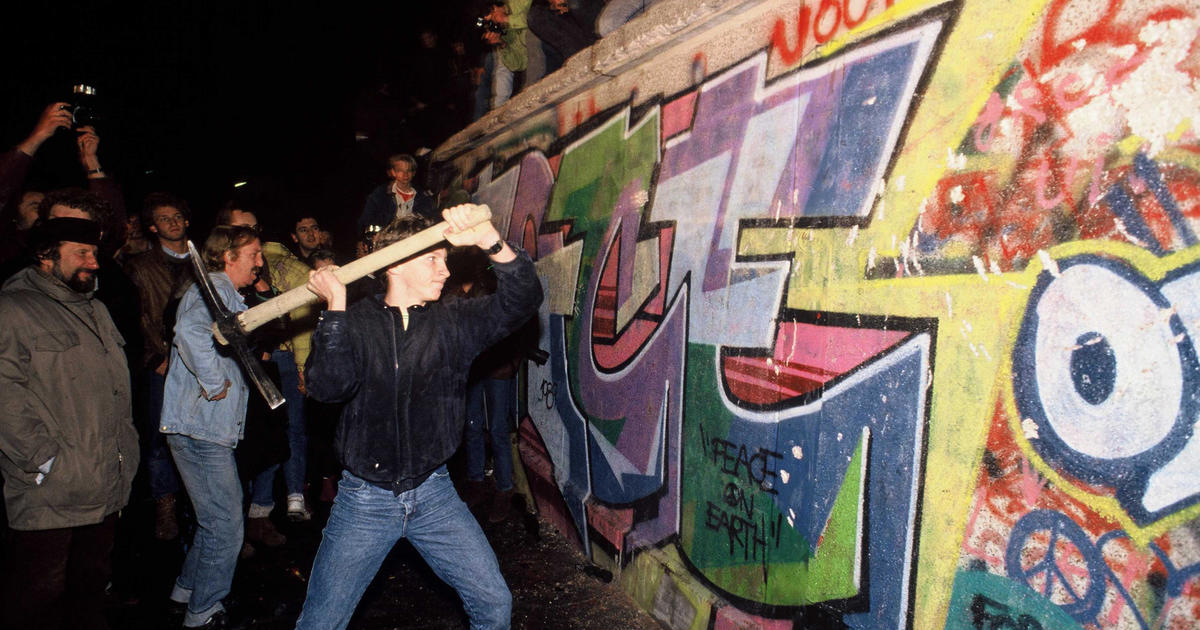
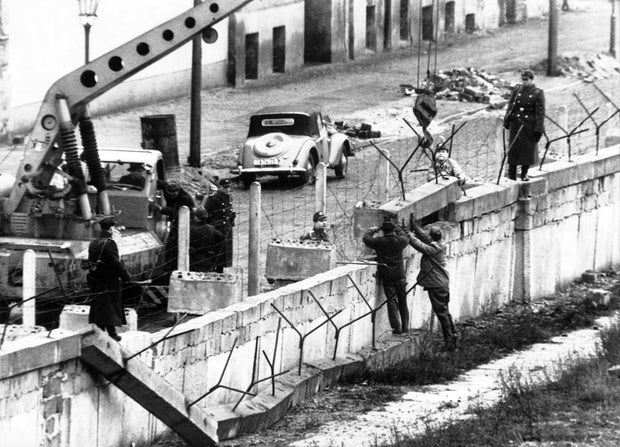
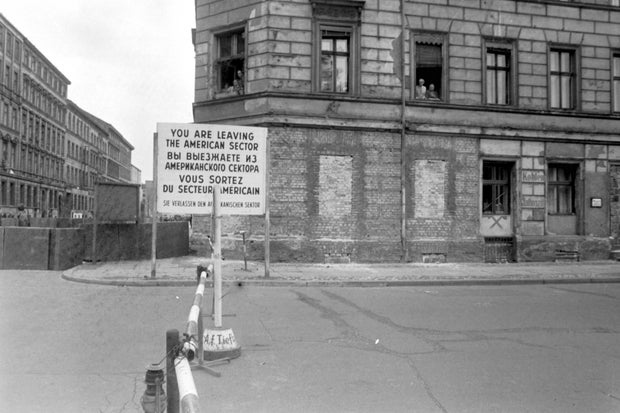
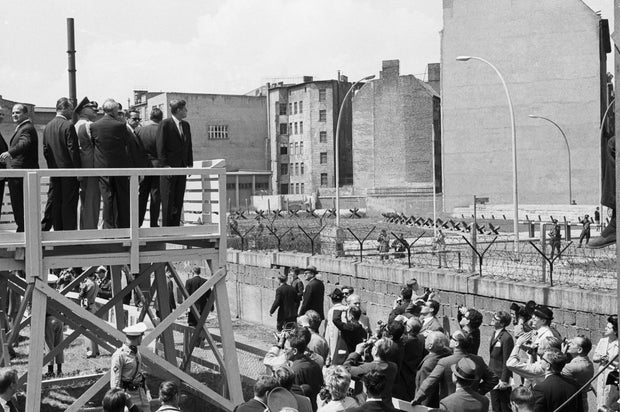
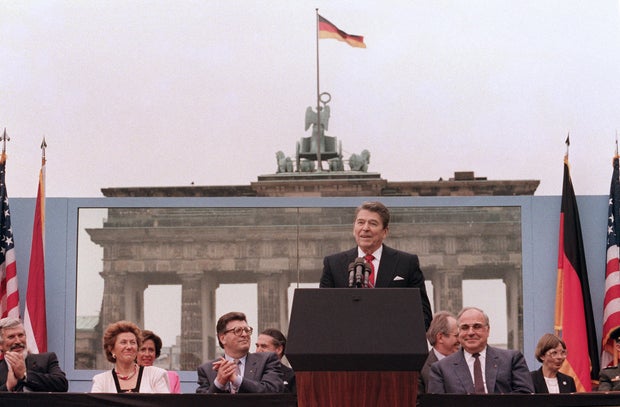
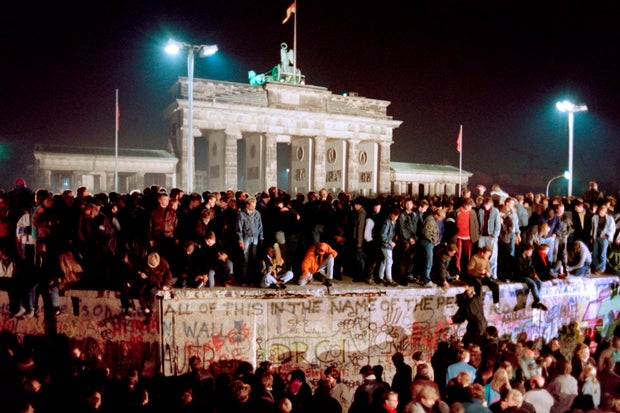
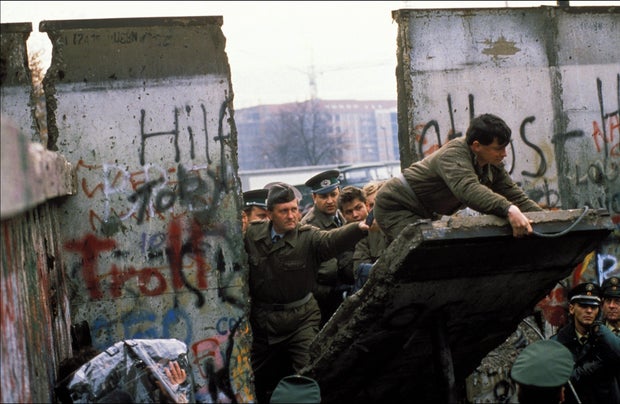

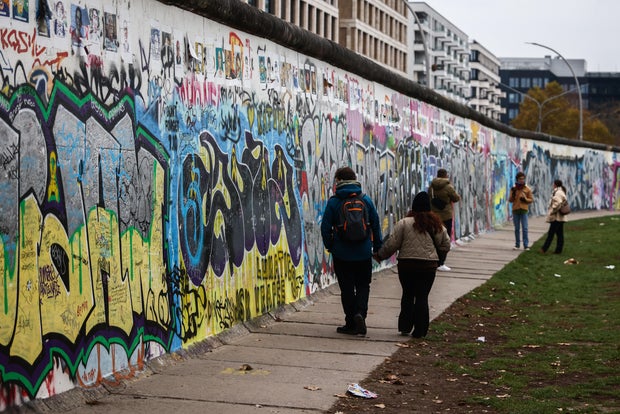
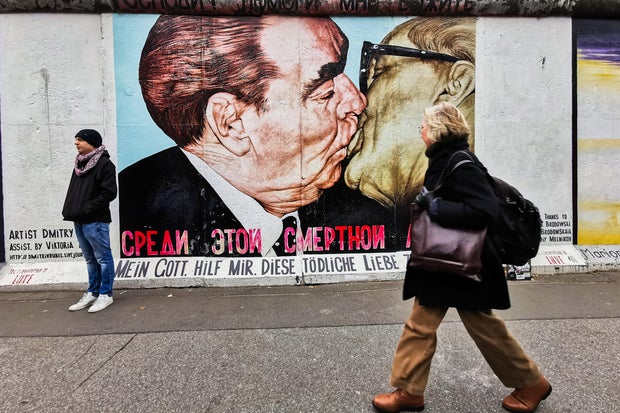
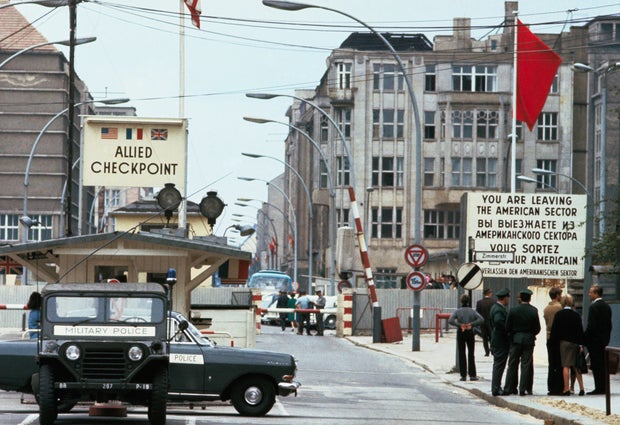
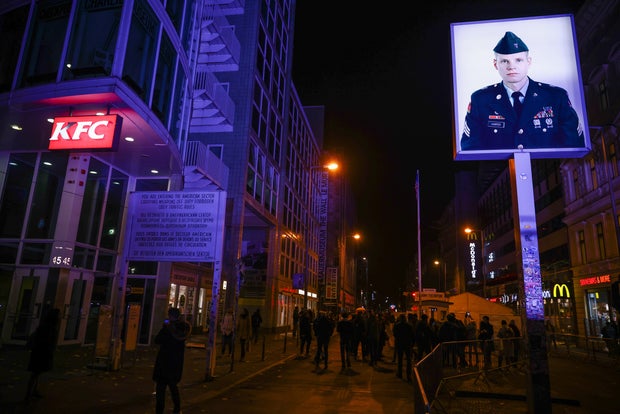
Leave a Reply